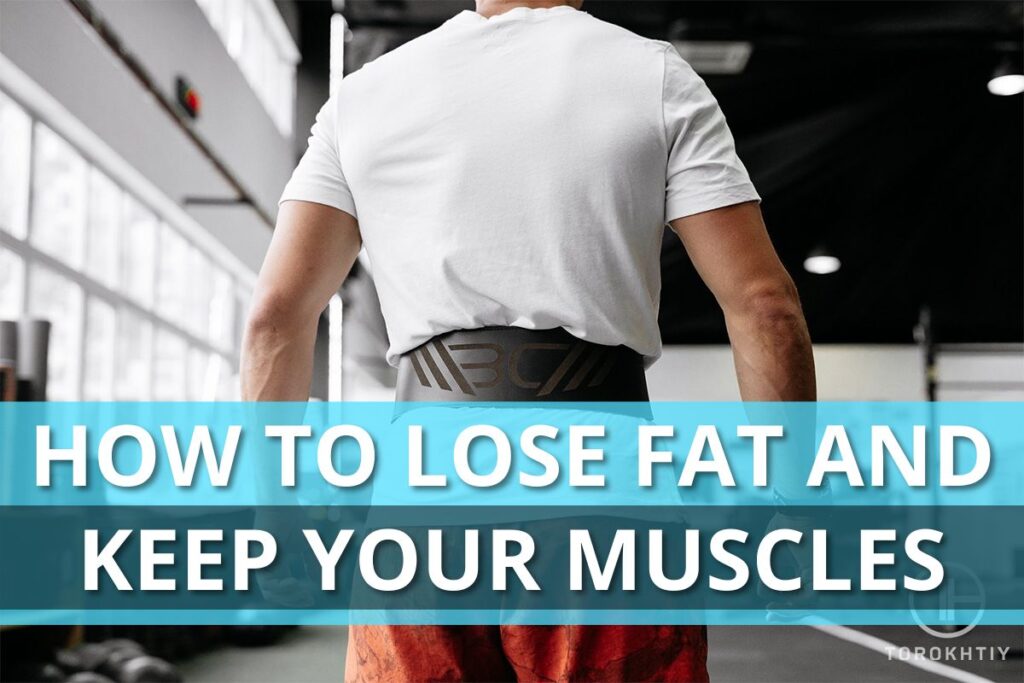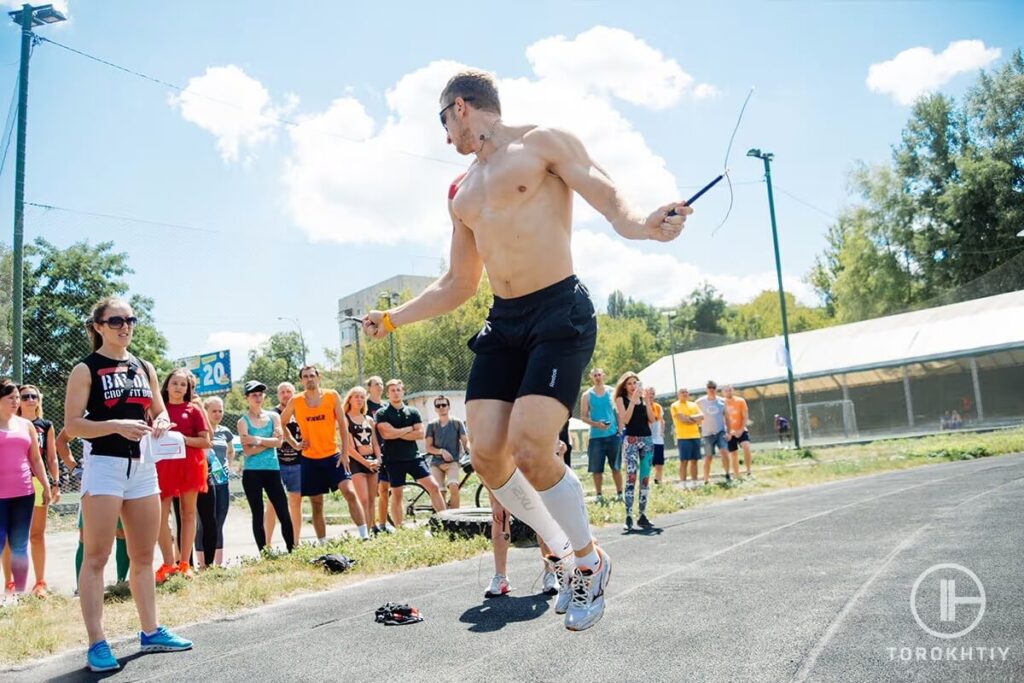How To Lose Fat And Keep Your Muscles
Author:
Unlock your full potential by engaging with our experts and community! Have questions about your fitness journey or looking for expert advice on weightlifting techniques? Don’t hesitate — leave a comment below and Sergii Putsov will provide a personalized answer and insights to help you reach your goals.
Torokhtiy is reader-supported. Some links are affiliate links, and we may earn a commission at no extra cost to you. See our disclosure page for details.

Almost every weightlifter dreams about reducing his fat and keeping his muscles intact or even gaining more of them. But can you practically lose your fat without losing an ounce of your muscles? It is possible, and further, I will tell you how to diminish your muscle losses when reducing your body fat level.
Who is it who can lose fat and gain muscles simultaneously?
It used to be thought to be impossible because the attempt to burn fat and gain muscles is similar to pushing both the accelerator and brake pedals at the same time. We’re all aware that you need a calorie surplus to make muscles grow, and a calorie deficit to reduce the fat level. These conceptions are contrary to each other in their core.
But some of the recent scientific studies refuted this obsolete dogma and showed that gaining muscles while burning fat is quite a realistic endeavor. There is even a new definition of this process nowadays that is called body recomposition. But as usual, there is an exception – not everyone is capable of doing this.
There are 4 kinds of people that can burn fat and build muscles at the same time:
You may like it:
- Rookies.
- People with overweight and obesity.
- Athletes that made a long break in their strength workouts.
- People with a bad training program and nutrition plan.
In rookies’ cases everything can be explained by their yet unrevealed potential. Their muscles have never experienced regular strength loads, that’s why even a badly planned training program will shine for them providing a good bump for the growth of both strength and muscle tissue. Just because there was no significant regular stimulus for muscle growth in their past.
People that have many extra kilos or even obesity have a great fat reserve that can cover high muscular tissue’s energy demands. And if this is a rookie then it is a win-win situation.

Every athlete that had a long break in his workout routine has to make 1 or 2 steps backward as a fair amount of his strength and muscles was lost due to a big resting period. Additionally, the fat level is also likely to go up during such pauses. All of the aforementioned creates the condition under which both of these goals could be achieved. Especially if such phenomena as “muscle memory” is taken into consideration because it helps muscles to regain their former strength and shape very quickly.
People that follow bad training programs for several years and are careless about their nutritional plan are a separate kind. If they manage to take control over their nutrition and make some improvements to their workout plan it will greatly increase the possibility for simultaneous fat burning and muscle gaining.
Advanced athletes with many years of training experience behind their shoulders use their potential almost to the full and are only a few steps away from their genetic borderline. That’s why it is nearly impossible for them to get their muscles growing and fat tissue reducing at the same time.
The genetic program that each of us has also plays a crucial role here. A lucky one can continue to get some impressive gains together with becoming unbelievably shredded even after several training years. While a rookie that was “gifted” with only below-average genetics can lose a fair part of his muscles trying to get rid of his extra fat pounds. Such guys, unfortunately, only strengthen their skinny-fat positions.
Losing fat and saving muscles: the strategy
Follow the recommendations I’ll give you below to keep your muscles intact or, in the worst case, to minimize their losses.
These recommendations are suitable for rookies, overweight people, athletes after a long break and genetically lucky ones, I will help them to achieve both of the goals – to reduce their fat level and to get muscle mass.

Recommendation №1 – a non-aggressive calorie deficit
The lower body fat level you have the milder your deficit should be. When I say “mild” I mean 200-250 kcal below the number of calories you need to maintain your weight. You can increase this deficit to make it more distinct like 400-500 kcal a day. If your fat level is higher than 15% for men and 25% for women.
The more aggressive the deficit is the more muscles you will lose. Also, you’ll inevitably have to cut your carbs sticking to calorie deficit producing a negative impact on your workout performance and total wellbeing. Don’t try to boost this process by the severe calorie deficit as by doing so you will make your goal even more remote.
Recommendation №2 – protein priority
Among all nutrients protein is the key one for maintaining your muscles. Many studies have shown that people on high-protein diets always preserve (and even gain) more muscles than people on low-protein diets. Their fat losses are also noticeably significant.
Protein consumption recommendations for healthy people (without kidneys and liver diseases) – 1,6-2,2 g of protein per 1 kg body mass. The lower the fat level is the more you should move to the upper limit of this range.
Recommendation №3 – strength training with loads maintenance or progression
There is nothing that provides such a powerful impact upon muscle preservation and growth as intensive weight training. If you switch your ordinary training plan to the one that has been properly planned you’ll see the obvious changes in 2-3 months.
By the way, we have recently launched updated training programs. They were planned in a specific way to grant you both muscle and strength growth even under calorie deficit conditions.
Recommendation №4 – little to no cardio
Keep in mind that you should not do too much cardio. I would shift my focus to walking during the fat loss period. High-intensity cardio workouts may be bad for your weight training recovery.
Recommendation №5 – at least 8 hours of sleep
Many athletes underestimate the role that sleeping plays in saving their muscles during the shredding period. It is a big mistake to do so.
During one of the related experiments both groups of participants were sticking to a calorie deficit diet but one had 8,5 hours of sleep while the other only 5,5 hours. Two weeks later both of them showed the same 3 kg body mass reduction. But the ones that had more sleep lost 1,4 kg of fat, while the ones that had less only 0,6 kg. The losses of fat-free mass also were more significant in participants that had slept 5,5 hours. This is what we definitely don’t want to occur to us. I recommend sleeping 8-9 hours.
Use this strategy and you will succeed in saving your muscles and lowering your fat level. Remember that patience and consistency are the main pillars in this case.
You might be interested in:
Why Trust Us?
With over 20 years in Olympic weightlifting, strength training, nutrition coaching, and general fitness our team does its best to provide the audience with ultimate support and meet the needs and requirements of advanced athletes and professional lifters, as well as people who strive to open new opportunities and develop their physical capabilities with us.
By trusting the recommendations of our certified experts in coaching, nutrition, and sports training programming, as well as scientific consultants, and physiotherapists, we provide you with thorough, well-considered, and scientifically proven content. All the information given in the articles concerning workout programming, separate exercises, and athletic performance, in general, is based on verified data.
The product testing process is described in more detail here.
Author: Sergii Putsov
Head of Sport Science, PhD
Best Results: Snatch – 165 kg,
C&J – 200 kg
Sergii Putsov, Ph.D., is a former professional weightlifter and National team member, achieving multiple medals in the 94 kg weight category at national competitions. With a Master’s degree in “Olympic & Professional Sport Training” and a Sport Science Ph.D. from the International Olympic Academy, Greece, Sergii now leads as the Head of Sport Science. He specializes in designing training programs, writing insightful blog articles, providing live commentary at international weightlifting events, and conducting educational seminars worldwide alongside Olympic weightlifting expert Oleksiy Torokhtiy.




Still have questions after reading our article? Unlock your full potential by engaging with our experts and community! Don’t hesitate — leave a comment below and Sergii Putsov will provide a personalized answer and insights to help you reach your goals.